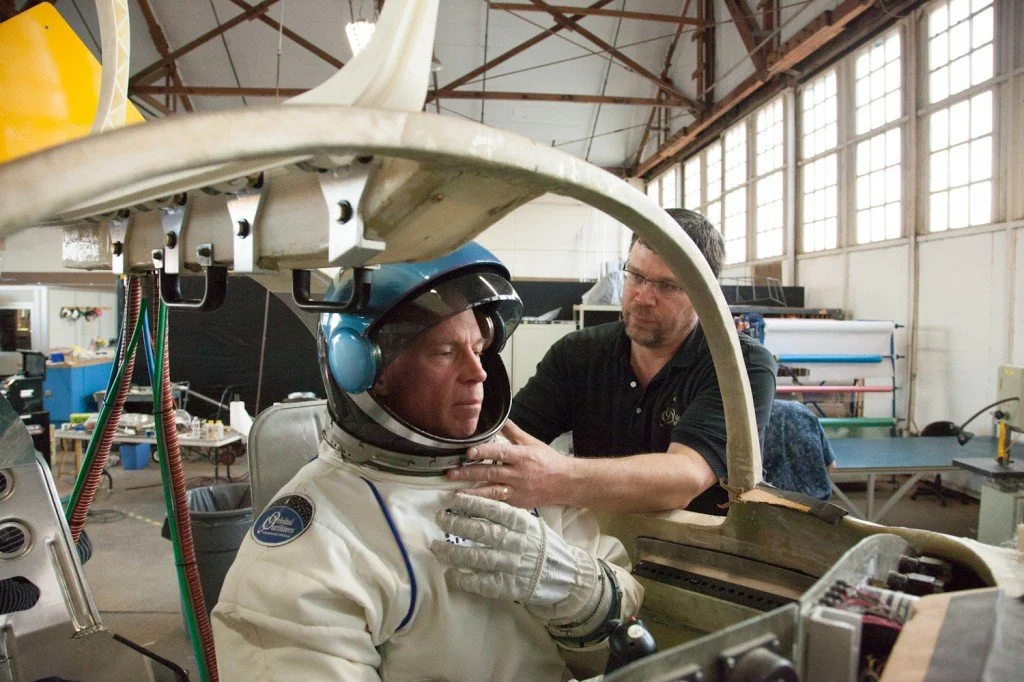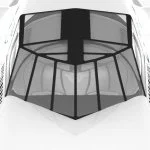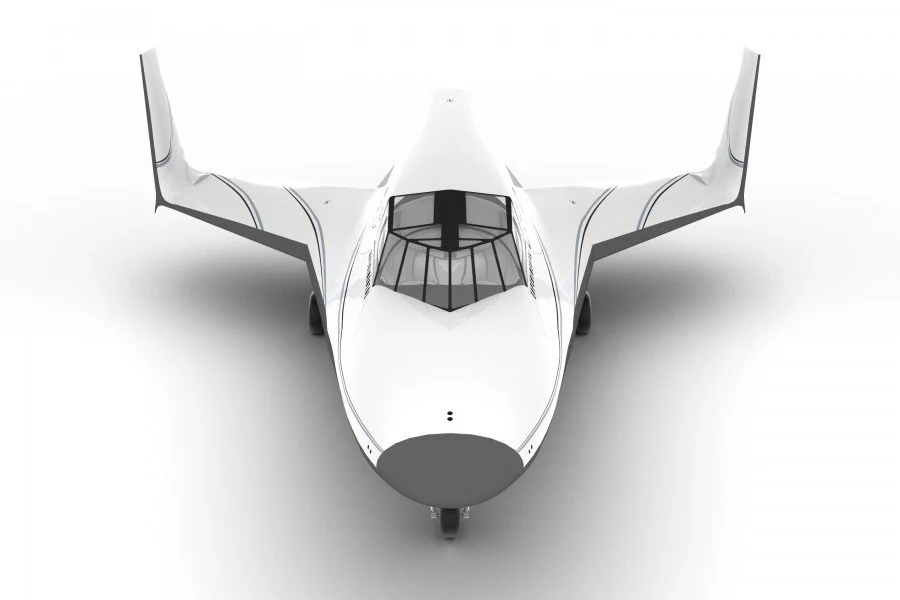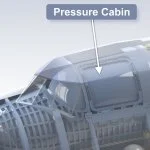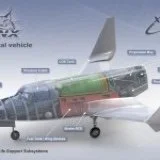XCOR Lynx: Cockpit and Avionics 101
XCOR Chief Test Pilot and former NASA Astronaut Rick Searfoss sits in a full-scale Lynx cabin mockup to test a prototype helmet and suit with Orbital Outfitters Chief Designer Chris Gilman.
Each Tuesday we detail features of the cockpit, its avionics and life support systems, environmental controls, pressure suits and payload configurations. We will also take a look at fabrication, mockups and other key design points.
When boarding Lynx, you climb right into the cockpit, slide down and strap in next to the pilot. It is an unobstructed view, and within minutes after liftoff you experience the Earth, stars and space at 328,000 feet inside the glass canopy of the Lynx cockpit.
This cockpit is a self-contained pressurized vessel that sits inside the outer shell of the Lynx vehicle. It is attached to the fuselage (containing the liquid oxygen tank), the wing strakes (containing the kerosene fuel), and the nose (containing the front landing gear).
Note that the windscreen on the Lynx cockpit actually constitutes *two* different windscreens. The distinctive flat panel look of the front windscreen is high temperature / high strength glass that protects the cockpit from heat and forceful strikes.
The inner windscreen is a complex curved shape that holds the pressure of the cockpit.
The Lynx cockpit is maintained at approximately 8000 feet “pressure altitude”, similar to what we experience flying New York to Los Angeles in a Boeing 737. To maintain this environment, the cockpit includes a life support system which is also integral to the pressure suits that both pilot and spaceflight participants wear as safety back- up devices in case there is ever a loss of pressure. In normal operating conditions, breathable air is circulated through the cabin and suit from an onboard supply.
Over the next few Tuesdays we will show you the cockpit in various stages of construction.
Tomorrow marks our first day on Lynx fuselage and structures. More to come.
